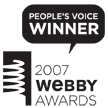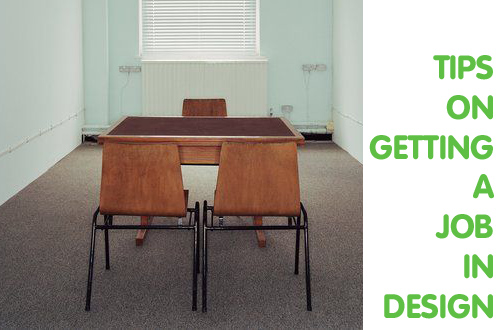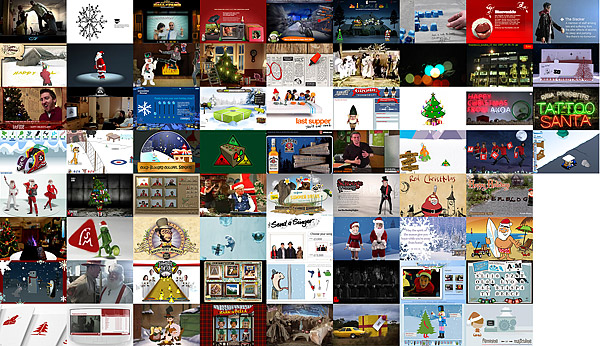With a boom in interactive right now getting a job in this industry will probably be easier than it has ever been since the crash. Getting a a good job in the agency you want will be harder.
There are already some good articles out there like this one and this one I thought I'd throw my hat into the ring and give tips based on my experience.
I, along with 3 others, run a small interactive agency called Soap. We're 21 people so we have different needs to a lager agency of 100 or so. We also don't have a HR department and all applicants are seen by the directors.
These tips should cover anyone studying design but will focus on people looking to work in the digital/interactive field. These apply for people seeking junior roles. If you already have industry experience then a lot of this won't be of use.
Disclaimer: A good friend disagreed with a few of the points I mention below. So please note that this is my personal opinon and by no means the "official" law by which people go about getting a job.
Warning: This MOFO is long. I don't have the skills to condense it into a top 10 article.
Pre Interview (while still studying)
1: Get a URL
It doesn't matter what you study get yourself a URL. It's part of your brand. Consider yourself a brand and create a consistant way in which people view you. The easiest is to do something with your name.
Getting an email from "sexy-chick82@hotmail.com" does not send the right message to anyone.
Get a domain from ClicknGo for .com.au's and GoDaddy for .com's
Once you have this URL make sure to put your contact details on the page. Name, phone number and email. Have a link to your work on this site. If you're a print designer then just link to a PDF.
If you have no web skills then pay someone to do this for you.
2: Get an ABN
Register with ASIC to get an ABN. Do not register for GST
unless you're expecting to freelance for over $50,000 in a year. If you do you'll have to fill out paper work every 3 months.
Having an ABN allows you to invoice people legally. Some companies may want to take you on in a freelance capacity as a trial period and without an ABN it slows this down. Get an invoice template ready, ask your lecturer for an example, so your ready to start earning some cash.
It's free to get an ABN you can register for one at ASIC here.
3: Your Portfolio is Everything
We don't care if you've studied Swedish massage or what marks you received we only look at your portfolio to judge you.
I generally spend about 1 minute looking at a portfolio. If the work doesn't talk to me by then it's all over.
Make sure your portfolio has only your best work. Don't throw in hundreds of sketches and water colour test you did in 1st year. Keep it trim, 10-12 pieces showing a range of skills.
Imagine if you send your portfolio to a busy CD and he only looks at once piece (and it happens). You want that piece to be good.
Note: Some agencies may put more importance on your education more than I would. But when it comes down to it if you've never seen a text book but have skills to burn you'll be hired without a blink.
4: Portfolio Style
You have two options with your portfolio and both have their merits.
A: A visual and emotional experience which showcases your work and personality.
eg Jonathan Yuen is a good example of this
B: A "just the facts" style portfolio where everything is presently cleanly and simple to browse.
eg: MrMalho & Edwin Tofslie
I personally prefer the latter as you can quickly scan the work and everything is easy to find.
Note: The two latter examples are for designers with not only many years of experience but amazing portfolios. While Jonathan's site won him almost every major award it definitely took a lot longer to put together.
I suggest having a simple portfolio and putting your spare time into creating an "impressive online experience" for something else. Rather than a portfolio site, make a site for one of your final year briefs instead or for a local band.
5: Emailing Your Portfolio
DO NOT send a 6MB PDF via email. Always send a brief, personalized, email with a link. Do not use DEAR SIR. Find out who you are sending it to. Most companies will list their staff and send it to one of them personally.
A rule should be that you should never send the same email to multiple companies. Make reference to something specific to that company. If they have a Foozball table drop a note about how much you kick ass at Foozball.
Note: you may be asked to prove your Foozball skills so make sure you can back the claims.
6: Resumes
You only need to send a resume (which for you in this early stage of your career is probably very lean) only when asked for one. Make sure your resume is "designed" too. No standard word docs please.
7: Follow Up Emails
You won't always get replies to your emails from agencies. Leave it 5-10 days before following up with another email. If you don't hear back then you're best of trying somewhere else.
At Soap we pool all emails together and review weekly. While we only receive about 5 a week other friends have complained about receiving 20+. There just isn't enough time to reply to everyone.
8: Research where you want to work
Do some research on where you want to work. Be selective but be realistic. Spend time going through their previous work and most importantly find out who to send your request to.
9: Don't Ring
Calling up and asking to speak to someone about a job is a big NO.
We can't see your work over the phone and the person you are calling is probably busy. Also you don't sound as nervous via email as you can have time to compose a proper message.
10: Different is better than Boring
I think being different is better than being boring.
Find ways that you can make yourself different (read: stand out) from all the other graduating students.
Note: there is a difference between being "different" and being a "weirdo" and if you're going for a position at "ABC BORING Agency" then you might want to tone this down a little.
A good example is at a recent graduate show there was only one student who had a plasma screen set up with a motion piece he did. The other students must have hated him :)
11: Practice going through your portfolio
Go through your portfolio with your parents, friends and neighbours. You wont have palm cards for this so knowing what you want to say about your work is important. Keep it short and concise.
It shouldn't take more than a minute to go through each piece.
12: International Students
Get proper advice on VISA's and your ability to work in the country.
Some smaller companies may not be able to arrange a working VISA or not know the procedures involved so it's better if you have a handle on this too.
The Interview
13: Have a Printed Portfolio backup
If you're work is 100% online it's also nice to have a printed version to bring along to the interview. You never know if the connection will be sketchy or your site is currently down. It's also a good leave behind.
14: Don't wear a suit
It's a creative industry so smart casual is the way to go. Collered shirt and nice pants. Clean shaven and neat hair. For ladies I guess you'd know what smart casual means but remember your going for a job interview not a blind date.
15: Ask Questions
Ask questions even if you know the answers. If you're talking to people who run the agency then they'll have no trouble talking about it.
Ask about what type of role you'd be up for.
What's the break down of staff (designers to coders to management)
Feedback on your portfolio (for future interviews)
When can you expect a reply.
If this is the first interview I would steer away from questions about money.
We hardly ever hold more than one interview, but this may differ to other agencies.
Post Interview
16: Follow Up Email
The day after the interview make sure to send a follow up thank you email. Don't always expect a reply. Basically you're in "ass kiss" mode so being on best behaviour is the way to go.
General Tips
17: Personal Projects
A portfolio
of course work is good but having personal projects in your portfolio shows initiative and hopefully will replace some of the weaker pieces in your book.
Pick something you like (music, karate, guitars, video games) and create something with that as your inspiration. Seek out a local band and do their logo, CD cover and web site and try to avoid doing your uncle's plumbing service letterhead.
A Flickr account or a blog on a topic you love is another way to hone your skills.
18: Collaboration. The good C word
Continuing on from Personal projects is collaboration. Once you enter employment you will never completely own a project. You will always be working in a group and you will always be doing part of a project. Learning to work with others is important. A good way to learn this and to also quickly add more personal projects is to collaborate with other talented people.
I email illustrators I like the work of all the time. One of the first was Nathan J who we have worked with since 2000 on many projects. His illustration with our flash skills was a perfect combination. Look around and try to find what you can combine your skills with.
19: Work Experience
Work experience is essential. It not only lets you network but is like one long interview. WE is different to an internship. You get paid with an internship and it's usually full time for a set period of time. WE can be just a day a week for a month.
It's a great try before you buy for everyone and you might find that the company you wanted to work for isn't as interesting on the inside as it looks on the outside.
20: Networking
The saying its not what you know it's who you know is true in most cases. Of the 21 people we employ, only 5 were from people applying for jobs. The rest came from referrals and friends we already knew.
Attend as many design functions as you can and talk to people. Comment on people's blogs and generally get your name out there.
Once you gain employment then make friends with everyone, even the people who wear suits. I spent 6 months at a large agency and it was the producers there that ended up helping us start Soap rather than the fellow designers.
Australia is lucky to have a site like Australian Infront which is exclusively for Australian designers. This is your best place to start networking.
21: No BS
The easiest way to make your life hell at a job is to lie.
Over stating your ability leaves you feeling nervous all the time and will eventually lead to problems.
I once knew of a girl who used her boyfriends portfolio to get a job. She then had to email files to him back and forward all the time. She eventually quit the job before anyone found out.
The boyfriend was a 1st class liars as well so they made a good couple.
22: Look outside of the "Design World"
If you only buy design magazines and
visit design web sites then you're work is always going to look "designy". Explore the world for everything it offers for inspiration. Music, art, graffiti, travel, food, photography are all out there.
23: Skills Checklist
The skills we look for in a junior designer are as follows:
- Creavitity
- Typography & layout skills
- Attention to detail & understand of craft
- Software skills (Photoshop, Illustrator, Flash)
- Initiative
- Motion skills
- Illustration Skills
- Photography skills
While creativity is essential, as a junior you really need to be able to handle layouts and show good attention to detail. You won't be responsible for much "creative input" when you first start so be prepared for that. You could just be scanning, resizing images and touching up photos for the first few months.
Note: software is usually the only thing that differs between industries. A print designer has the same skill set to web designer except for what software they use.
24: Adobe Flash skills
It doesn't matter if you only want to do design, learning Flash is a big advantage. It's the most prolific piece of software after Photoshop in our industry.
We don't expect designers to be able to code a website or a game but basic understanding of the program is a huge bonus.
A simple idea I saw was to animate your business card in flash. Or take a piece from your portfolio and turn that into a motion piece. This basic understanding of the Flash could put you ahead of your peers.
Even when going for a print design job, knowing this piece of web software is an advantage. Design agencies love to dabble in the web.
24: Spell Check
This isn't as much of an issue for me as I'm a sloppy typer but make sure to re-read your emails before you send them and check your portfolio for typos.
If you can get someone else to proof read for you.
The End
And that's about all I have to say. I hope some of the tips might be useful and I'd appreciate any feedback other people have on this matter. I'm no expert and only going off my own experiences as both a person looking for a job and a person hiring.
|



 Well we're a little late on the Xmas ecard round up. Blame Ashadi and his PS3 :)
Well we're a little late on the Xmas ecard round up. Blame Ashadi and his PS3 :)
